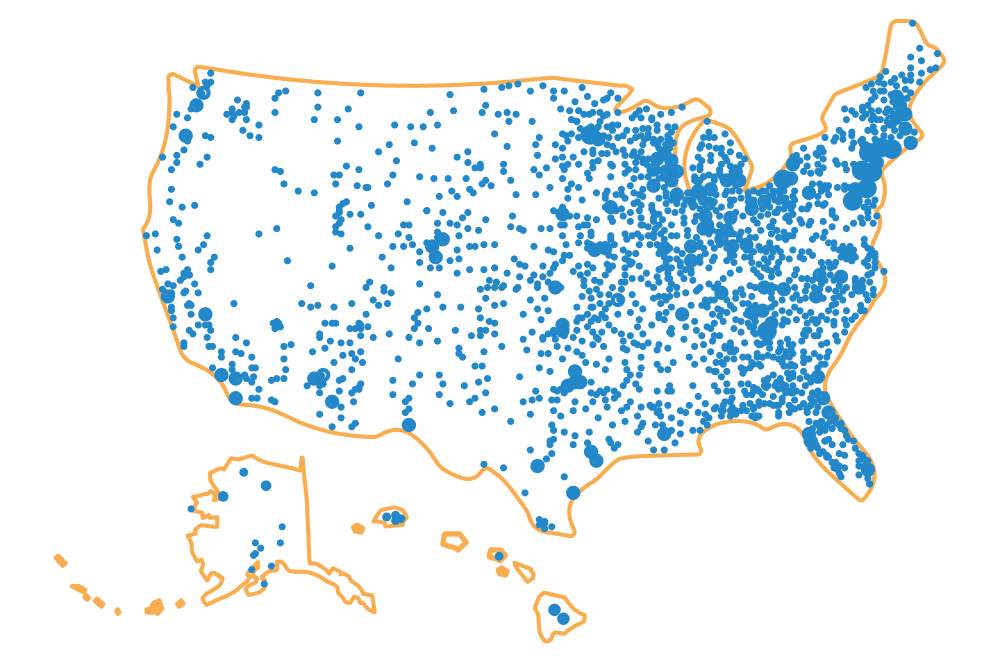Ohio’s 529 Plan, CollegeAdvantage, wants to remind everyone that 529 plans cover qualified higher education expenses at federally accredited schools. These include two-year community colleges, trade, technical, and vocational schools, certificate programs, apprenticeships as well as four-year colleges and universities.
529 plans aren’t just for four-year programs
You can use the funds in your Ohio 529 account almost anywhere you are comfortable sending your child and your money. 529 plans can be used at any higher educational institution that accepts federal financial aid. If you want to confirm that the schools your child is interested in attending — whether four-year, two-year, graduate, trade or vocational — accepts federal aid, then do a search to see if the institutions have a Federal School Code on the Free Application for Federal Student Aid (FAFSA). If the schools do, then you can use your 529 funds there.
If you child wants to start an apprenticeship, the program must be registered with the U.S. Secretary of Labor’s National Apprenticeships Act in order to use your 529 savings there.
Community colleges can be an excellent place to start education after high school. Usually lower in cost than a four-year program, your child can take required core classes that, in many cases, will transfer to other schools, or explore different courses while searching for their dream profession. Your student can work toward an associate degree or use the community college as a stepping stone to a traditional four-year university. Either way, a 529 plan can cover qualified high education expenses.
Does your child have a creative mind? Your 529 plans can help cover qualified costs at eligible institutions focused on the arts or music. Are they considering a career in religion? Your 529 plan can cover expenses at eligible universities.
If your child attends a federally accredited vocational or trade school after high school graduation, then these schools can provide a great education focused on specialized skills. Because of these schools’ close connections to professional trades, your child may graduate with a full-time, well-paying job already lined up. The schools’ areas of expertise can range from broadcasting, cosmetology, culinary arts, diagnostic imaging, graphic design, information technology, massage therapy, mortuary science, nursing, restaurant management, truck driving, to welding, for example. Your 529 plan can be used here, too.
Most graduate schools — whether business, law, medical, dental, or other studies — are also be eligible institutions.
Ohio’s 529 Plan can be used nationwide
While you may have saved in Ohio’s 529 Plan, you can use your funds at both Ohio schools and schools nationwide. 529 plans can be used across the United States at any accredited post-secondary school that accepts federal financial aid.
529 plans withdrawals are tax free
One of the great advantages saving with Ohio’s 529 Plan is all withdrawals are tax free when used for qualified higher education expenses at these accredited programs. These costs include most of the major expenditures for attending an accredited institution like:
- tuition;
- room and board during any academic period in which the 529 beneficiary is enrolled for at least half of the full-time academic workload according to the eligible education institution. Room and board costs can also include rent for off-campus residency and groceries (non-taxable items), provided these costs are equal or less than the same room and board allowances from the accredited education institution;
- mandatory fees;
- computer equipment and related technology as well as internet services;
- books, supplies and equipment related to enrollment and class schedule;
- certain expenses for a special-needs student;
- qualified apprenticeships costs such as fees, textbooks, supplies, and equipment like required trade tools. The apprenticeship program must be registered with the Secretary of Labor’s National Apprenticeships Act in order to use a 529 withdrawal. Interested parties can check the U.S. Labor Department’s search tool to confirm that a program is registered, and therefore, eligible for a 529 withdrawal;
- payment of the principal and interest on qualified education loans for the 529 beneficiary or the beneficiary’s siblings. The loan repayment provision applies to repayments up to $10,000 per beneficiary. The $10,000 is a lifetime amount, not an annual limit;
- payment of K-12 tuition up to $10,000 per student, per year, for enrollment at public, private, or religious elementary or secondary school. 529 distributions to pay for K-12 tuition is limited to $10,000 per year. Consult your qualified tax advisor for specific information; and
- starting on Jan. 1, 2024, families with leftover funds in their 529 accounts can rollover it over to a Roth IRA for the same 529 beneficiary without incurring any penalty on the earnings. There are some requirements in order to use this new qualified distribution. First, a 529 account must be open for the beneficiary for 15 years. Second, the Roth IRA must be for the same beneficiary of the 529. Third, your contributions—which are also known as the principal—must have been in your Ohio 529 account for at least five years before the Roth IRA rollover. Fourth, you can only roll over 529 funds up to the yearly Roth IRA contribution limit, which is $6,500 for 2023. Fifth, the lifetime maximum 529 amount allowed for the Roth IRA rollover is $35,000.
While there are many higher education paths forward for your kids, one thing is certain: Ohio's tax-free 529 Plan is the simple way to prepare. Your savings grow tax-free and stay tax-free when used for qualified higher education expenses. And Ohio's 529 Plan can be used at thousands of schools, nationwide.
For more than 33 years, Ohio’s 529 Plan, CollegeAdvantage, has been helping families across the nation save for their children’s higher education. Ohio’s 529 Plan covers qualified costs at any four-year college or university, two-year community college, trade or vocational school, apprenticeship approved by the U.S. Labor Department, or certificate programs, or continuing education classes nationwide that accepts federal financial aid. Learn, plan, and start for as little as $25 today at CollegeAdvantage.com.
The article was originally published in May 2019 and have been updated in February 2023 with new information.








